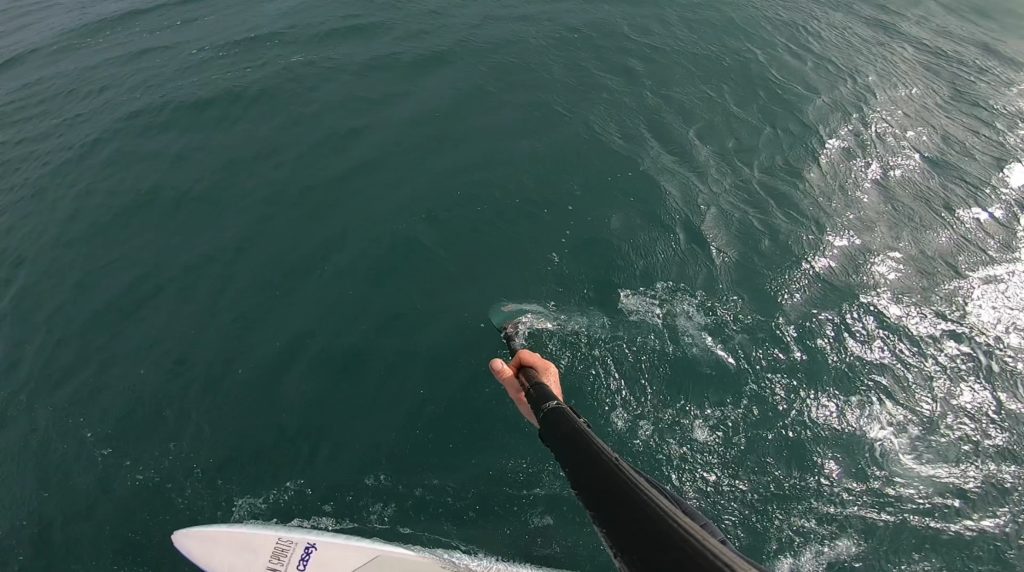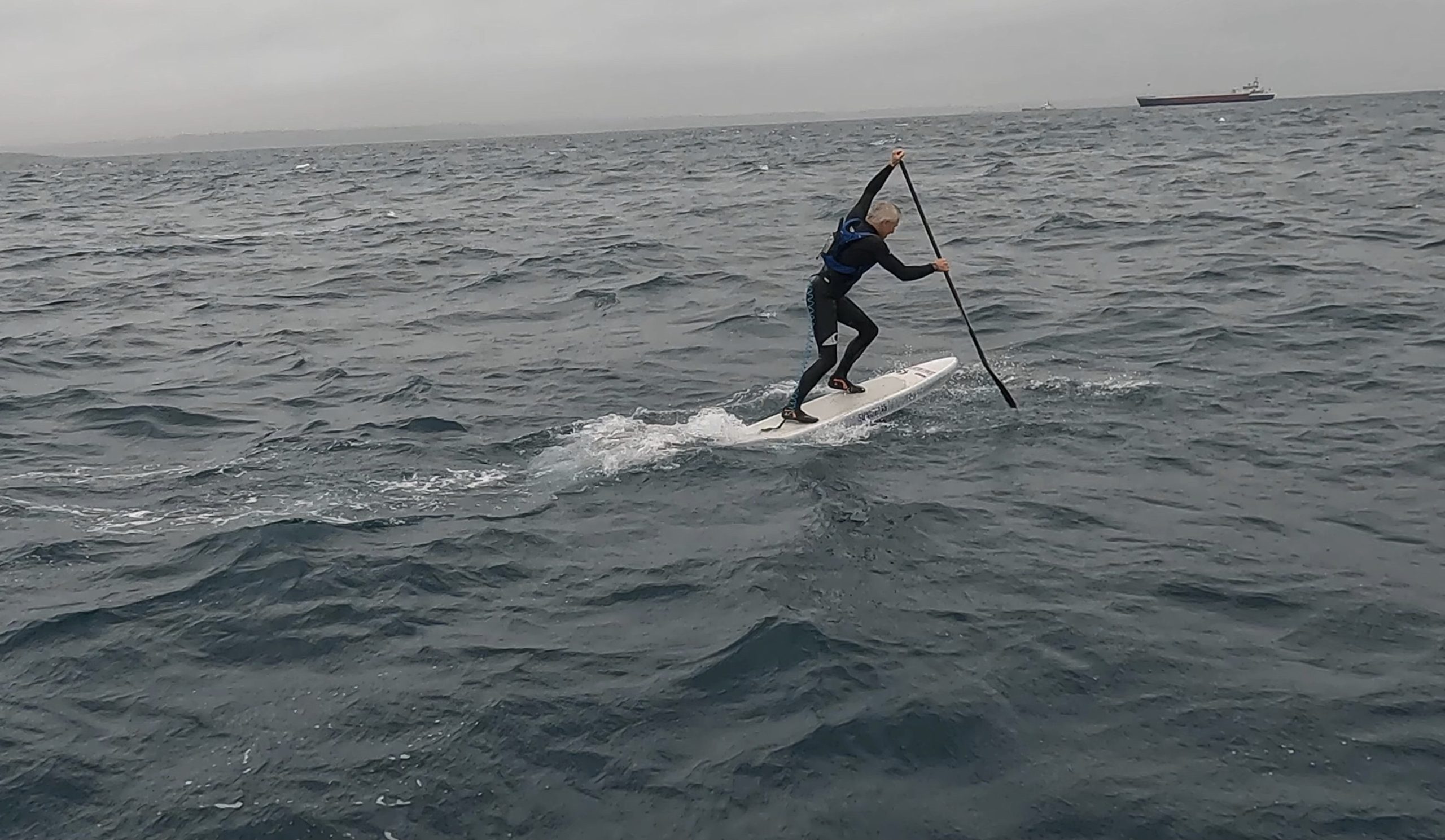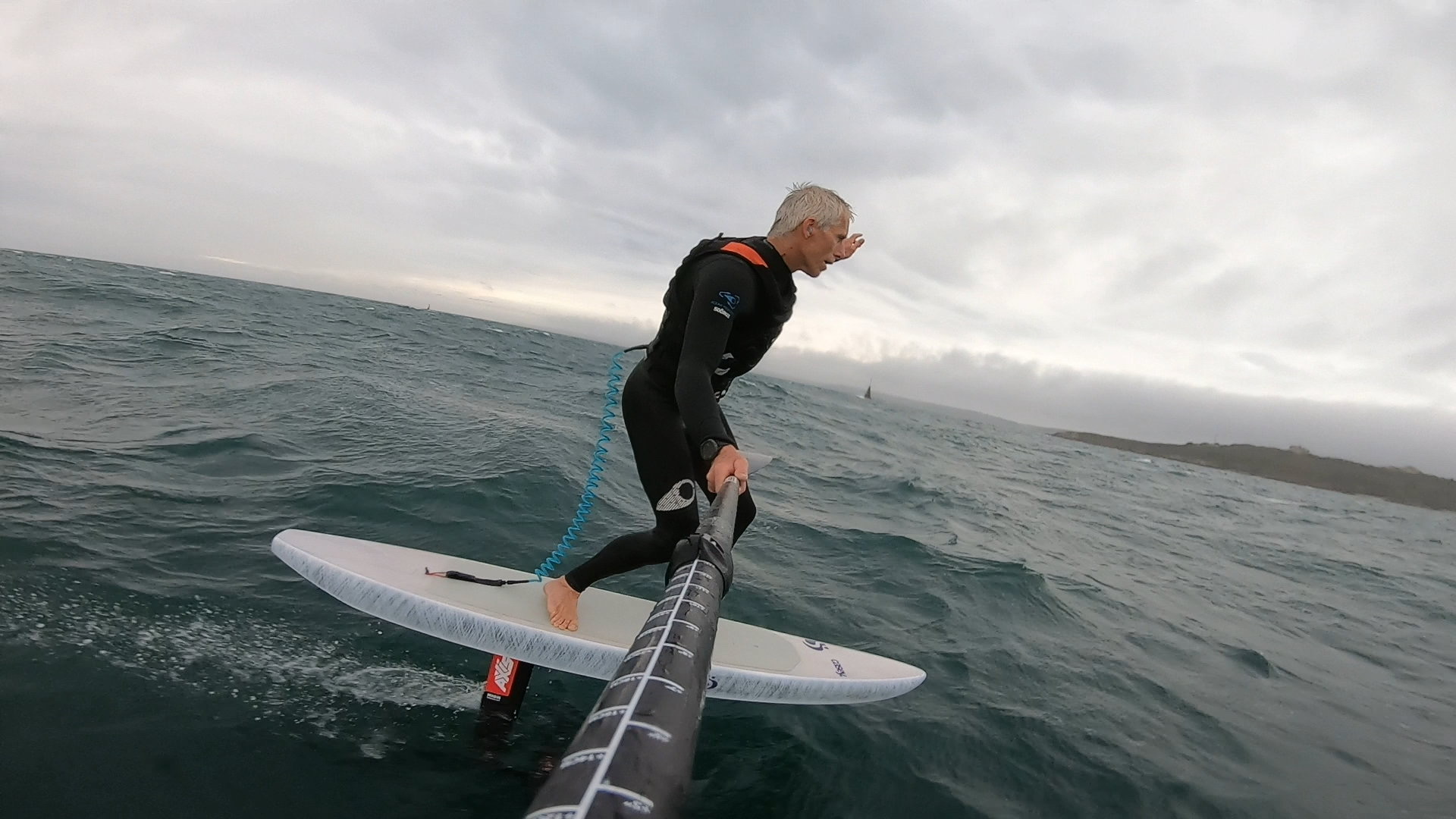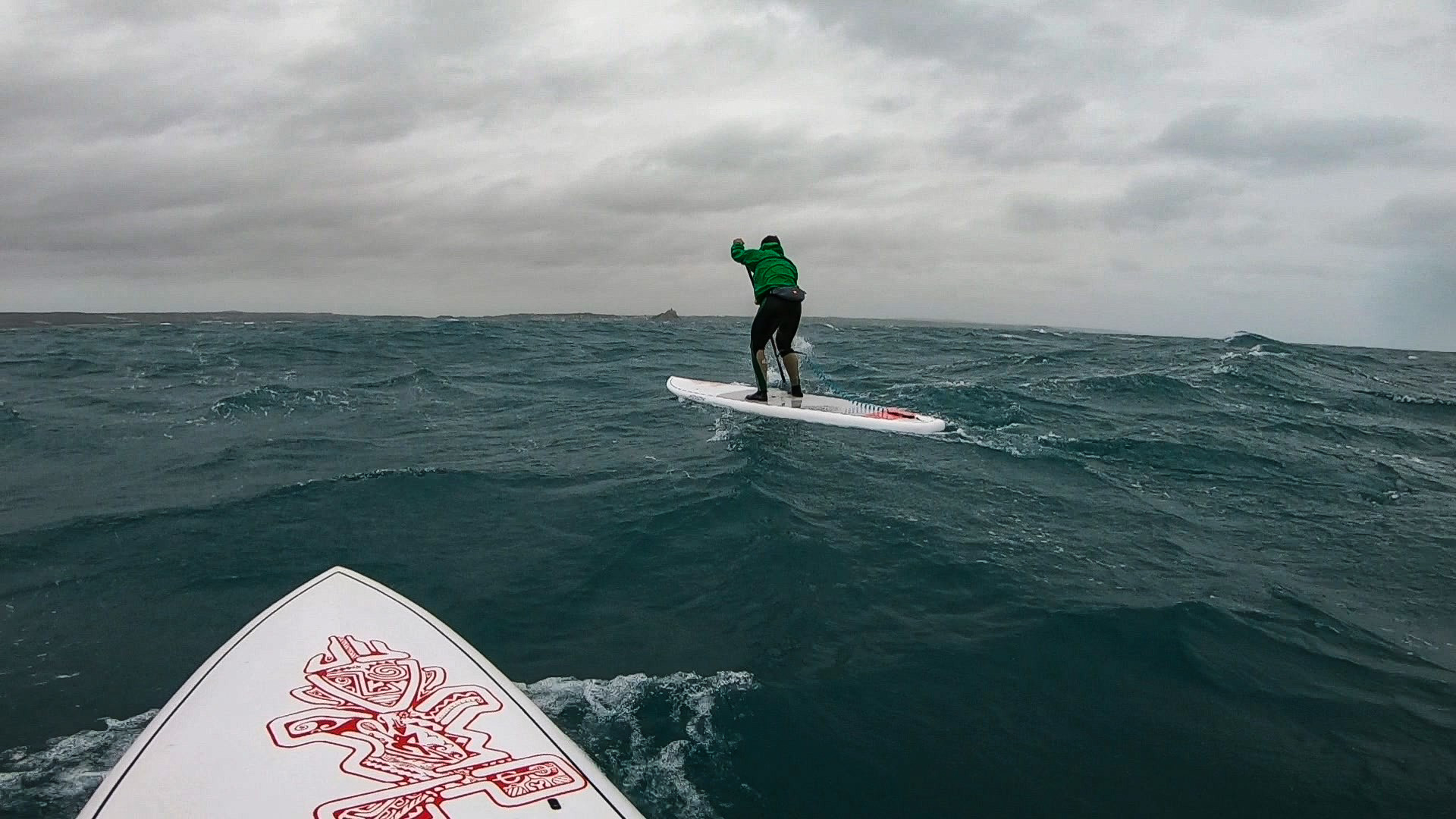Much of the stress of downwind (DW) SUP foiling is not necessarily about coming off foil, it’s usually along the lines of
‘can I paddle back up again?’
Knowing that you can stay on foil is a big deal, knowing that you can paddle back up, is a bigger deal. This little article will hopefully shine a smidge of light on phrases or techniques that are used in an almost mantra like fashion and establish if they are as helpful as you might hope. The three I am going to tackle are, stacking your shoulders, paddling in a straight line and being able to flat water paddle up. Neither of which are prerequisites for paddling up successfully on a downwind run.
Paddling in a straight line & stacking the shoulders; do you really need to do it?
These are two separate but linked aspects of paddling up. I hear / read a lot of people vent their frustration on not being able to paddle in a straight line, usually this is when they are paddling on flat water, and not always in rougher water.
Clearly going in a straight line is helpful but, it is not as important as you might have first thought. This is because, all things being equal, getting up on foil usually takes ten strokes or less – as we reach a certain speed the foil engages and helps to keep the board roughly on track.
My point is, paddling up on the flat usually requires more strokes and therefore, you are more likely to drift – it could be anywhere between 12 – 20 strokes. When we get things right, bump selection and timing, the board starts to release at four strokes or so (watch the video opposite) and in the air by ten – worrying that you can’t keep your board straight on the flat at 15 plus strokes is unnecessary stress.
Going out and practicing timing and technique taking off in chop is far more productive.
Useful Tips & Tricks
If you have SUP foiled in waves or SUP surfed, lining the board straight to the beach on take-off usually ends up with the nose of the board going past where you would like to go once you have reached full paddle power. More successful attempts start with pointing the nose slightly off of where you would like to go, so that by the time you have wound up your stroke rate and the wave / swell arrives the nose of the board has come around to where you want it to.
Something similar can help on a DW take off, simply point the board marginally off line to allow the nose to naturally come back to when you’re at full power – how much depends largely on conditions and your skill.

Kahi & J stroke
A really handy technique is the use of a kahi (pictured opposite) – a stroke, I think, is confused with a ‘J’ stroke. A Kahi is a static stroke and acts like a fin placed up near the nose of your board, helping you to keep on track when lining up or used to pull the nose offline just before winding up. To do it place the paddle up near the nose, 45cm or to the side to help drag sideways (ferry glide), blade face facing the rail and hold it there. This is a passive stroke and only works while water is flowing over the blade i.e. the board is moving forward. Once speed or water flow reduces stops the kahi is no longer effective and the ‘J’ stroke comes into play, pulling the blade back to the rail and then down along the board.
Vertical Paddle Shaft & Shorter Strokes Further Forward
The next least controversial is paddle shaft alignment and stroke length – a more vertical shaft (seen in the video opposite) creates less torque and helps to keep the board traveling on a straight’er path. Stroke length is the next one, pulling the paddle past your feet not only slows the board but also creates a turning force that pushes you off line. Reaching toward the nose of your board, while maintain balance and exiting by your toes reduces the effect of a less vertical shaft but also, makes it easier to accelerate the board.
Controversially, Stacking Shoulders & Weight Distribution
Few if any, address weight distribution across the rails – and this is where the term ‘stacking the shoulders’ can exacerbate the issue. But first, before I go any further, a primer – more is not necessarily better. Naturally, paddling on one side we will have a degree of rotation as we reach forward, similarly, one shoulder will be higher than another – increasing this rotation or raising the recovery arm, shoulder ‘stacking’, has a negative effect on paddling in a straight line.
Now an experiment. Stand up, if you have a broom to hand grab it, otherwise stand in your surf stance and stack your shoulders and reach forward with your imaginary paddle. Now consider where your weight has shifted? there may even be a hint of a lean toward the toe side and is your bum poking out the other side?
Weight Distribution & Displacement Rails
When balance is focused more over one rail we are more likely loose balance, particularly when it is rougher, but the rail also sinks. When we are paddling the board slowly it is in displacement mode, this means the rail that is being pressed down forces the board to turn in the opposite direction. The opposite happens when we are planning, think of a surfer putting in a bottom turn on a wave, the rail in the water drives the board back up the face of the wave. Stacking the shoulders and over reaching only serve to compound this problem, increasing loss of balance and going off on a tangent.
So, if you can’t paddle in a straight line on flat water, don’t stress, it’s not such a biggy. But, there are things we can do to mitigate this. Try to get your paddle as vertical as you can (it will never be exactly vertical so don’t fret), reach more toward the front of your board and exit by your toes; practice using a kahi to help steer your nose to where you want it, then use a ‘J’ stroke when you slow down, reach as far forward as you can while keeping balanced and your body centred over the board while keeping both rails flat.
Finally, DON’T STACK YOUR SHOULDERS!
If you are interested in learning more or developing your skills further why not sign up to our Downwind 101 or our Dark Art workshops held regularly throughout the year. To find out more click here.



